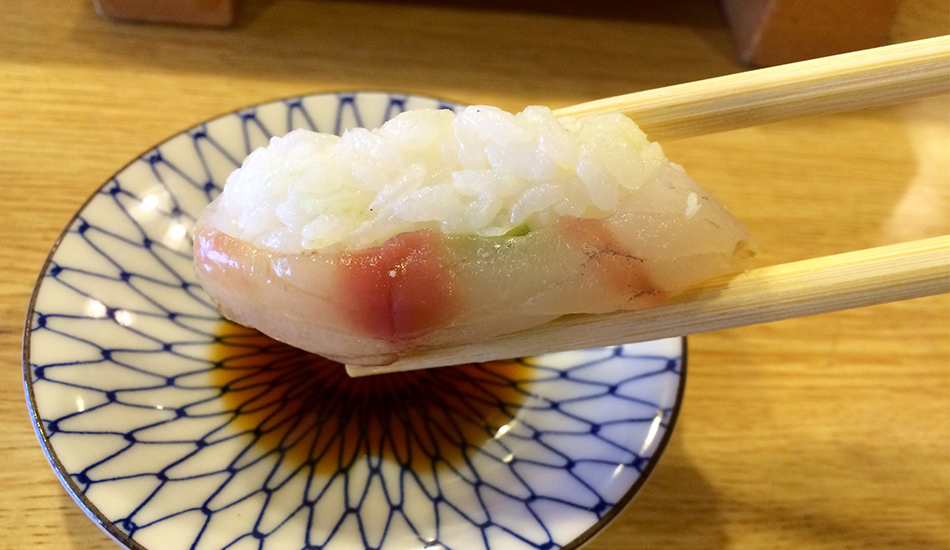Young people, dropping in casually… are on the increase !
Published: March 29, 2018
What’s your ideal sushi restaurant? One imagines most people have a paragon, whether it’s a world famous Ginza temple to raw fish or an LA emporium frequented by Hollywood stars. Discrete lighting, gleaming pine counters, whispered conversations between steely-haired titans of industry and glamorous women, that sort of thing; but for many of us the ideal sushi restaurant looks a lot like Chikura in Sumiyoshi, Koto-ku.

A dark wooden interior, a splash of colour here and there, display cases of fish and behind the counter a veteran sushi chef; that’s Chikura and it’s proprietor of 43 years, Mr. Umeyoshi Miyashita. Born and raised in the South Boso Peninsula town of Chikura, Mr. Miyashita spent five years working for a fisheries company in Tokyo before quitting to follow his dream of becoming a sushi chef and owning his own restaurant.

“I got a job in a sushi restaurant in Tsukiji,” remembers Mr. Miyashita, “It was hard work but as I was a little older than the other staff I picked it up quickly. Within five years I was able to become independent and achieved my dream of starting a restaurant. I’ve been here for 43 years now and, I have to say, the time has gone really quickly. I go down to Tsukiji every other day and buy whatever is the best quality fish on that particular day. Sushi begins with this gizzard shad (“kohada” in Japanese). If the egg and the gizzard shad are good then you can assume the rest will be too.”
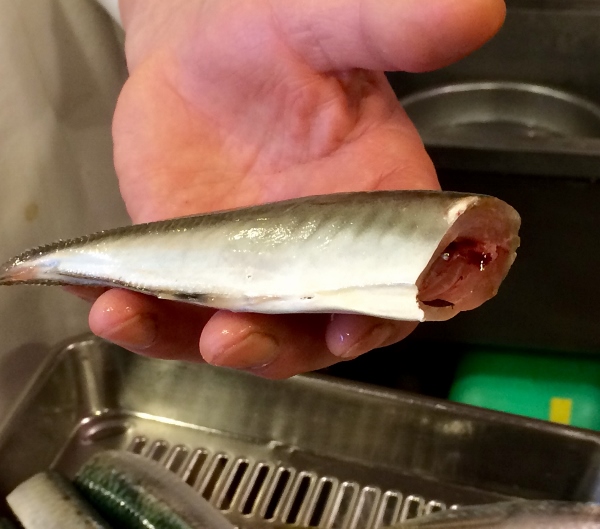
As befits a sushi chef from the fishing port of Chikura, Mr. Miyashita serves a couple of South Boso Peninsula specialities, namero and sanga-yaki. Namero is made from placing fermented soybean paste (“miso” in Japanese), sake, green onions, a perilla leaf, and ginger on top of Japanese horse mackerel fillets (“aji” in Japanese, pictured here) then mincing them with a sharp knife until it becomes sticky. Sanga-yaki is a similar dish except it contains sardine not horse mackerel and is fried. May is the horse mackerel season, while June is sardine time.
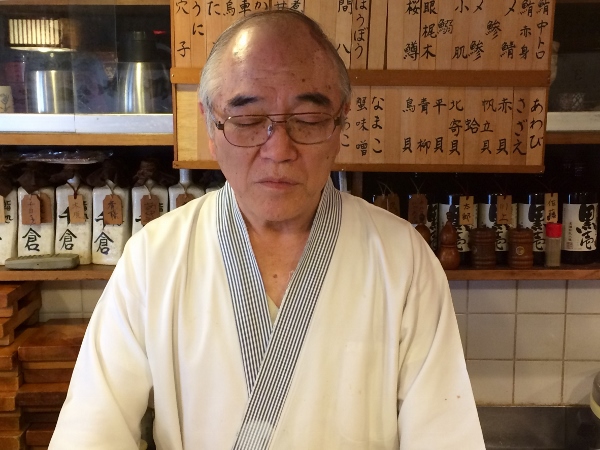
“I’ll make something interesting,” says Mr. Miyashita. With the deftness and economical movement developed over a lifetime of making sushi he prepares several pieces in what seems like the blink of an eye.
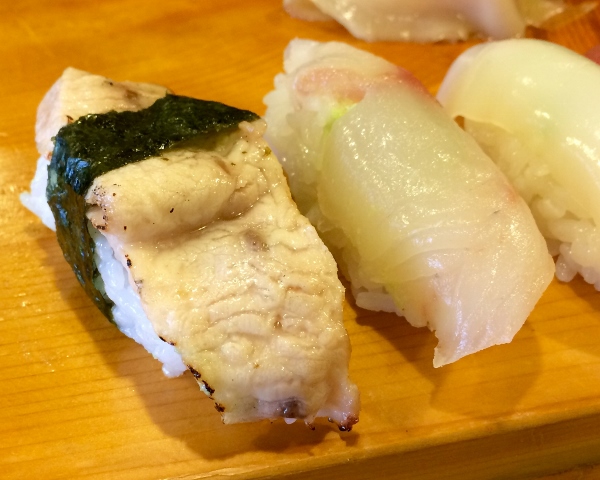
“Spring is a time of change for fish as well,” says Mr. Miyashita. “The Japanese flounder (”hirame”) gives way to the Japanese flat fish (“karei”), while the red gunnard (“hobo”) is superseded by the flathead (“kochi”).” This is a slice of lightly seared swordfish (“mekajiki”). On the right is the red gunnard, with a smooth and mild flavour; both are delicious.
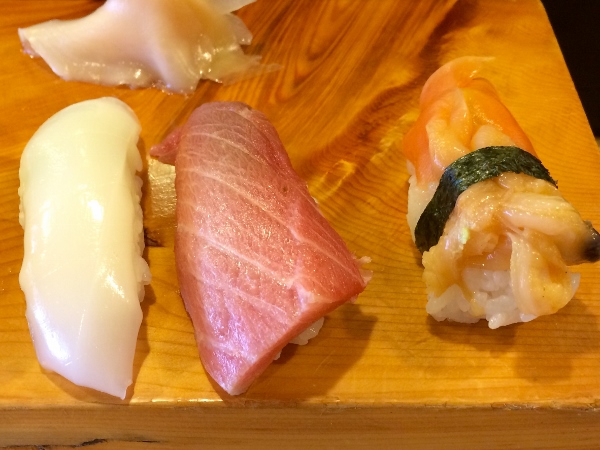
Here we have the pure white of Japanese spineless cuttlefish (“sumi-ika”), pink tuna (“otoro”) and the spectacularly coloured surf clam (“aoyagi”).
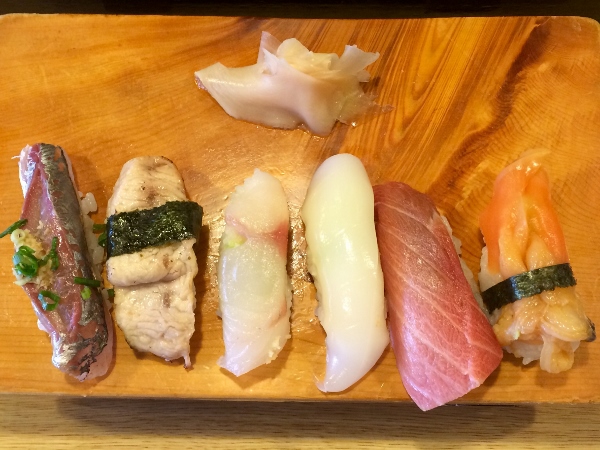
A piece of Japanese horse mackerel with ginger and long onion rounds out an incredible selection.
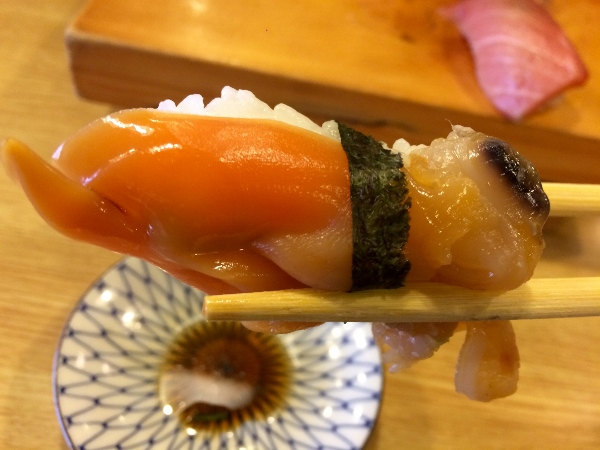
Mr. Miyashita bemoans the decline in the size of the surf clams. “They used to come from Tokyo Bay but shrank in size over the years. These are from Hokkaido and sometimes Aichi Prefecture.” It’s an amazing taste, soft and chewy, that seems to become sweeter as you chew.
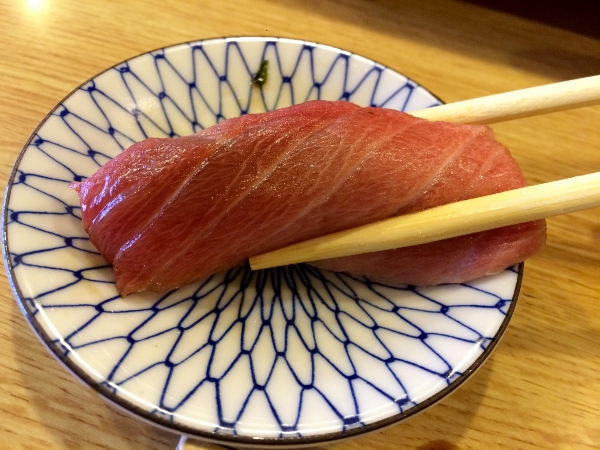
This slice of tuna was just wonderful. “I use no farmed fish,” says Mr. Miyashita, “None, and I never will. All my fish is wild-caught. Although wild-caught is more expensive I won’t adjust my prices, either. I’m stubborn, I suppose.” I enquire about the two fish tanks bubbling away near the counter. “They’re Japanese tiger prawns (“kuruma ebi”) in the top one and abalone (“awabi”) and turban shells (“sazae”) in the bottom. There are no fish; keeping fish in tanks like this gives them stress and that spoils the flavour. I would never serve my customers with fish like that. People talk about wanting fresh fish but aged fish actually tastes better, depending on the size of the fish.”
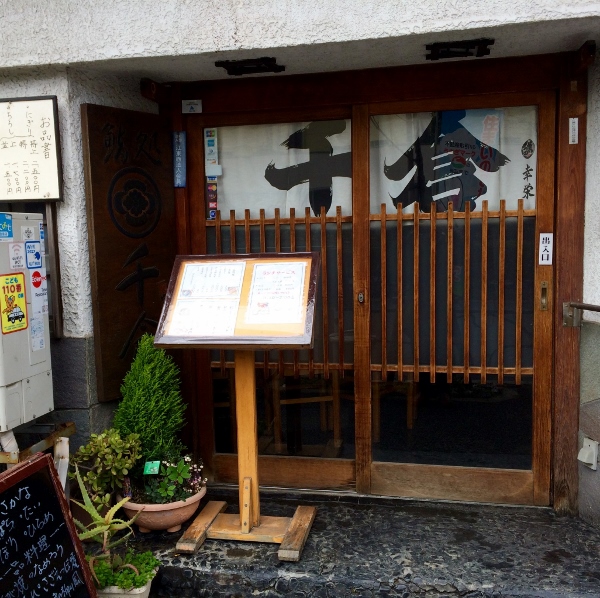
Lunch is very reasonable with handmade sushi (“nigiri-zushi” in Japanese) for one at 800 yen or an extra large serving (1.5) at 1000 yen if you’re feeling really hungry. In the evening there’s a set of nigiri-zushi for one, sashimi and sake or beer for 3,500 yen. This represents exceptional value; the sushi is of the highest quality and is only available at these prices because of the location and Mr. Miyashita’s dedication to his craft. A small variety of other dishes are available as well, such as scallops and oysters. This is a place for real sushi lovers. If that sounds like you, then just drop in and let Mr. Miyashita serve you. You’ll be glad you did!
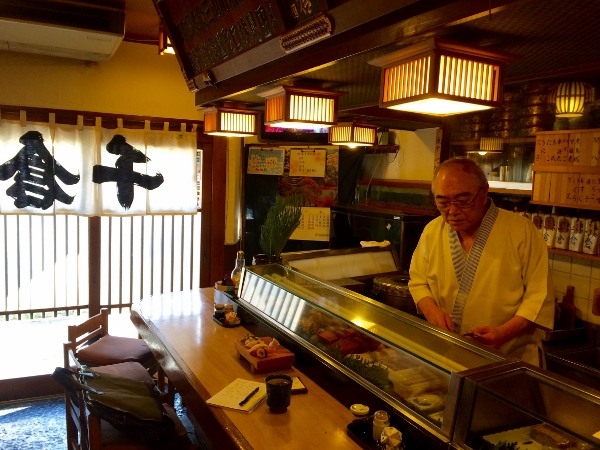
Story and Photos by Stephen Spencer

